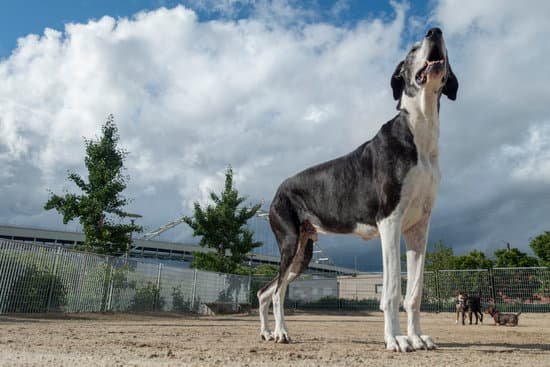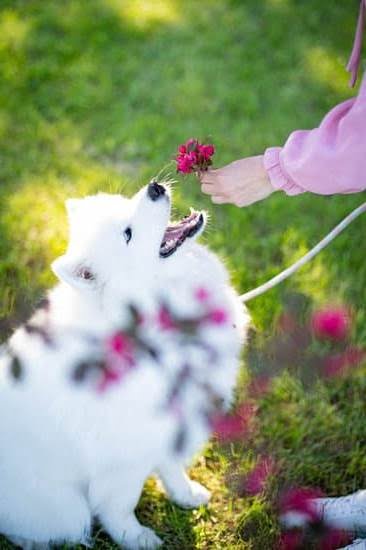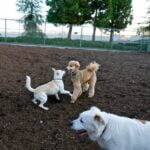Are you wondering how to clicker train your dog to know its name? Clicker training is a highly effective and positive method for teaching dogs new behaviors and commands. In this article, we will explore the process of clicker training your dog to respond to its name, including the benefits of this training method and the steps to achieve success.
Clicker training is a form of positive reinforcement that uses a small handheld device called a clicker to mark desired behaviors in dogs. It has been proven to be an effective and humane way to train dogs, promoting communication and understanding between pet and owner. By using a clicker, you can effectively teach your dog new commands and behaviors, including responding to its own name.
Teaching your dog its name is crucial for their safety and well-being. When a dog knows and responds to its name, it can prevent them from getting into dangerous situations or running off when called. Additionally, knowing their name strengthens the bond between you and your furry friend. With the right tools, patience, and consistent practice, you can successfully clicker train your dog to know its name.
Understanding the Importance of Teaching Your Dog Its Name
Building a Strong Communication Foundation
Teaching your dog its name is an essential aspect of building a strong foundation for communication. When your dog knows and responds to its name, it can improve obedience, safety, and overall behavior. Being able to call your dog’s name in any situation can help prevent accidents, keep them away from potential dangers, and make training sessions more effective.
Establishing Trust and Bonding
By teaching your dog its name and having them respond to it consistently, you are also strengthening the trust and bond between you and your pet. When a dog responds positively to their name, it shows that they are attentive and receptive to your cues. This creates a sense of mutual respect and understanding between you and your furry friend, ultimately reinforcing the bond between both of you.
Incorporating Name Recognition Into Everyday Activities
Another important reason for teaching your dog its name is the ability to incorporate it into everyday activities. Whether it’s at home, in public places, or during walks, having your dog respond to its name can make interactions with them smoother and more enjoyable. This can also help in socializing them with other pets and people, as well as making outings stress-free for everyone involved.
Preparing the Right Tools and Environment for Clicker Training
Before starting clicker training your dog to know its name, it is crucial to ensure that you have the right tools and a suitable environment for the training sessions. The main tool you will need is, of course, a clicker. This can be easily purchased at pet stores or online. Additionally, have plenty of tasty treats on hand to reward your dog during the training.
When it comes to the environment, choose a quiet and familiar space where you can minimize distractions. This will help your dog focus on learning its name without getting sidetracked. Make sure there are no loud noises or other pets around during the training session. It’s also important that the lighting is good so that both you and your dog can clearly see each other.
Creating a positive and comfortable environment for clicker training will set the stage for successful name recognition training with your dog. With the right tools and an appropriate setting, both you and your furry friend will be ready to begin this exciting journey together.
| Tool | Environment |
|---|---|
| Clicker | Quiet and familiar space |
| Tasty treats | No loud noises or other pets around |
Step-by-Step Guide on Clicker Training Your Dog to Respond to Its Name
Clicker training can be a highly effective method for teaching your dog to respond to its name. This positive reinforcement technique involves using a clicker, which makes a distinct sound, paired with a treat to mark the desired behavior. Here’s how you can use clicker training to teach your dog its name.
The first step in clicker training your dog to know its name is getting their attention. Use the clicker and immediately reward your dog with a treat when they look at you after hearing the click. Repeat this process several times until your dog understands that the sound of the clicker means they will get a treat if they look at you.
Next, start incorporating your dog’s name into the training process. Say their name and then use the clicker when they respond by looking at you. Reward them with a treat as well. Practice this regularly in short sessions, gradually increasing the length of time your dog maintains eye contact after hearing their name.
Finally, reinforce your dog’s name recognition in various environments. Practice in different rooms of your home, in your yard, and eventually out in public spaces where there are distractions. The key is to gradually increase the level of difficulty while still rewarding and positively reinforcing your dog’s response to their name.
Overall, consistency and patience are key when using clicker training to teach your dog its name. With practice and positive reinforcement, you can help your furry friend understand and respond to their name reliably.
| Step | Description |
|---|---|
| 1 | Get their attention using the clicker and reward |
| 2 | Incorporate their name into the training process using the clicker and reward |
| 3 | Reinforce recognition in different environments using gradual distractions and rewards |
Common Challenges and Solutions in Clicker Training
Recognizing Distractions
One common challenge in clicker training your dog to know its name is recognizing distractions. Your dog may be easily distracted by sounds, smells, or other animals in the environment, making it difficult for them to focus on responding to their name. To address this challenge, it’s important to start training in a quiet and familiar environment before gradually introducing distractions. Use high-value treats and praise to keep your dog’s attention focused on you during training sessions.
Overcoming Fear or Anxiety
Some dogs may have fear or anxiety issues that can hinder their ability to learn and respond to their name during clicker training. It’s important to create a safe and positive training environment for your dog, using patience and understanding to help them overcome any fears or anxieties they may have. Start with short training sessions and slowly build up their confidence through positive reinforcement.
Consistency and Patience
Consistency is key when clicker training your dog to know its name. Many owners face the challenge of being consistent with their training methods, which can confuse the dog and slow down the learning process.
It’s important to be patient and persistent with the training, providing regular practice sessions and rewarding your dog for responding correctly to their name each time. Remember that every dog learns at its own pace, so it’s essential to be patient and maintain a positive attitude throughout the process of clicker training your dog.
By addressing these common challenges with patience, understanding, and consistent training methods, you can help your dog overcome obstacles and successfully learn to respond to its name through clicker training.
Reinforcing Your Dog’s Name Recognition in Different Environments
After successfully clicker training your dog to respond to its name in a controlled environment, the next step is to reinforce this recognition in different environments. Dogs can easily get distracted by new sights, sounds, and smells, so it’s important to ensure that they can still respond to their name regardless of the location. Here are some tips on how to reinforce your dog’s name recognition in different environments:
- Start with familiar environments: Begin by practicing your dog’s name recognition in mildly distracting environments that they are already somewhat familiar with, such as a quiet park or a friend’s backyard. Gradually increase the level of distraction as your dog becomes more proficient at responding to their name.
- Use higher value treats: In more challenging environments, you may need to use higher value treats as a reward for responding to their name. This could be pieces of cooked chicken or cheese, which are more enticing than regular dog treats.
- Increase distance gradually: Once your dog reliably responds to their name in familiar environments, work on increasing the distance between you and your dog while maintaining their attention. This will help them understand that their name applies no matter how far away they are from you.
It’s important not to rush this process and be patient with your dog as they adjust to responding in various settings. Remember that consistency is key, and practice regularly in different environments to reinforce your dog’s name recognition effectively.
By reinforcing your dog’s name recognition in different environments, you will ensure that they always respond when called, providing safety and peace of mind in any situation. Remember that every successful response should be rewarded with praise and treats, helping to strengthen the positive association with their name.
The Role of Positive Reinforcement in Clicker Training
Positive reinforcement is a crucial aspect of clicker training your dog to know its name. By using positive reinforcement, you are encouraging desired behaviors and making it more likely for your dog to respond to its name when called. It is a gentle and effective way to teach your dog new commands and build a strong bond based on trust and communication.
To successfully implement positive reinforcement in clicker training, it’s important to use rewards that motivate your dog. This can include treats, toys, or verbal praise. The key is to find out what truly motivates your dog and use it as a reward during training sessions.
Here are some ways to incorporate positive reinforcement in clicker training:
- Use high-value treats: Choose treats that your dog absolutely loves and only offer them during training sessions as a reward for responding to its name.
- Verbal praise: Dogs respond well to enthusiastic praise from their owners. Use a happy tone of voice when praising your dog for obeying the command.
- Clicker signals: The sound of the clicker itself becomes a form of positive reinforcement. Each time your dog hears the click after responding correctly, it associates the sound with receiving a reward.
By consistently using positive reinforcement during clicker training, you are not only teaching your dog its name, but also creating an enjoyable learning experience for both of you. Remember to be patient and consistent in your approach, as every small step towards progress should be celebrated.
Maintaining Your Dog’s Name Recognition in the Long Term
Once you have successfully clicker trained your dog to know its name, it is important to maintain their name recognition in the long term. Consistency is key when it comes to ensuring that your dog responds to its name in any situation. Here are some tips on how to continue reinforcing your dog’s name recognition:
First, continue practicing the clicker training exercises regularly, even after your dog has learned to respond to its name. Incorporate short training sessions into your daily routine to keep your dog’s skills sharp. Use treats and positive reinforcement to motivate your dog to respond enthusiastically every time they hear their name.
Another way to maintain your dog’s name recognition is by introducing distractions during training sessions. Start by practicing in a quiet environment, then gradually add distractions such as other people, pets, or new environments. This will help your dog generalize their understanding of their name and respond reliably in different situations.
Additionally, make sure that everyone in the household uses the same techniques and cues when addressing the dog by its name. Consistency among family members and caretakers will reinforce the dog’s understanding of its name and prevent confusion.
By consistently practicing clicker training exercises and maintaining a positive training environment, you can ensure that your dog continues to recognize and respond to its name in the long term. Remember that patience, consistency, and positive reinforcement are key components of successful clicker training for dogs.
Conclusion
In conclusion, clicker training is a highly effective and rewarding method for teaching your dog to know its name. By using positive reinforcement and a clicker as a marker for desired behavior, you can create a strong bond with your furry friend while teaching them an important skill.
The step-by-step guide provided in this article can help you effectively train your dog to respond to its name, creating a deeper connection and better communication between you and your pet.
It’s important to remember that clicker training is not without its challenges, but with patience and consistency, you can overcome them. By understanding the common challenges and their solutions, you can ensure that your dog’s name recognition remains strong in various environments. Additionally, maintaining your dog’s name recognition in the long term requires ongoing practice and reinforcement, but the results are well worth the effort.
As you celebrate your dog’s progress in clicker training, remember that this process is not only about teaching them a command but also about building a positive relationship based on trust and communication. Through clicker training, you are not only teaching your dog to know its name; you are also strengthening the bond between the two of you. So grab your clicker and get ready to see the amazing results of training your dog to respond to its name.
Frequently Asked Questions
How Do You Teach a Dog Its Name With a Clicker?
Teaching a dog its name with a clicker involves using the clicker to make the association between the sound and receiving a treat. Start by saying the dog’s name and then clicking the clicker immediately followed by giving a treat. Repeat this process multiple times daily.
How Do You Train a Dog to Recognize Its Name?
Training a dog to recognize its name requires repetition and consistency. Start by saying the dog’s name in a positive, happy tone and rewarding the dog when it responds by looking at you or coming to you. Use treats, toys, or praise as rewards to reinforce the connection between its name and something good happening.
How Long Does It Take a Dog to Recognize Its Name?
The time it takes for a dog to recognize its name can vary depending on factors such as breed, age, and individual temperament. Some dogs may learn to recognize their names in just a few days with consistent training and positive reinforcement, while others may take weeks to fully grasp the association.
Consistent training and patience are key in helping a dog learn its name.

Welcome to the blog! I am a professional dog trainer and have been working with dogs for many years. In this blog, I will be discussing various topics related to dog training, including tips, tricks, and advice. I hope you find this information helpful and informative. Thanks for reading!





